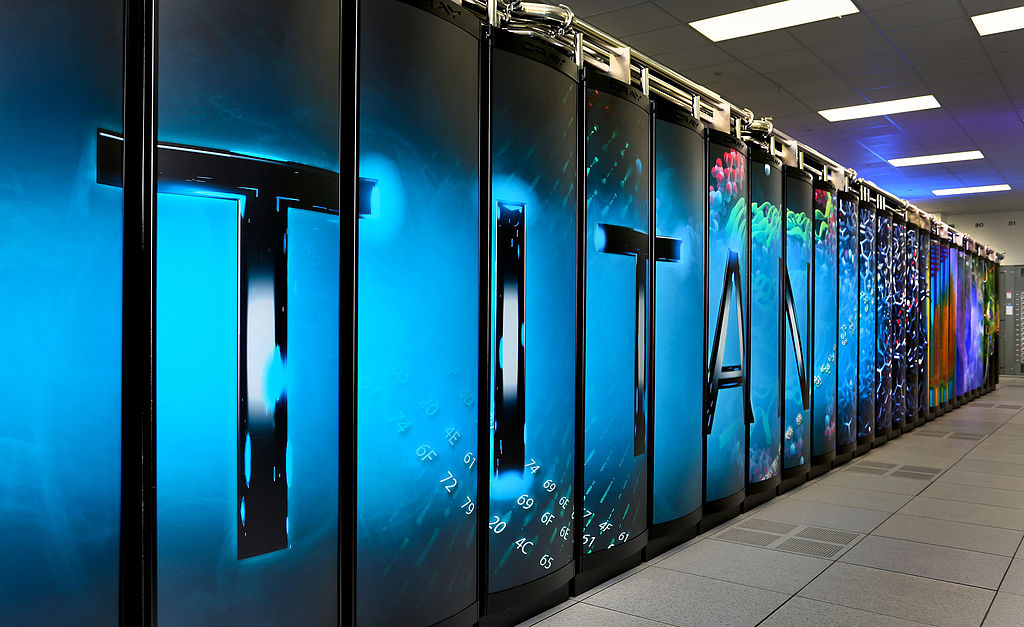Can consciousness last forever? The future brain will be "resurrected" again in digital form
Release date: 2018-04-02
Recently, there have been reports from foreign media that a US startup called Nectome plans to preserve the human brain and realize awareness uploading in the future. What is scary is that the process of preserving the brain needs to be carried out when the person is not dead, in order to obtain a fresh brain. This also means that to complete the consciousness upload, it is necessary to undergo a special "euthanasia" process. At present, 25 people have paid a deposit of 10,000 US dollars and entered the “waiting listâ€.

Image source: Nectome.com
"Dedicated to archiving your thoughts", this is the mission of Nectome, written on the official website's home page. If everything goes on the perfect plan, people's brains will eventually "resurrect" in digital form after being processed by the company.
Nectome's confidence in the future of "conscious uploading" comes from the new technology developed by its co-founder Robert McIntyre and other researchers, a cryopreservation technology called ASC (Aldehyde-Stabilized Cryopreservation). The technology gives them two awards from the Brain Conservation Foundation, the Small Mammal Brain Save Award and the Large Mammal Brain Save Award. The Brain Preservation Foundation says it's the first to use ASC technology. A large mammalian brain-connected group can be preserved for hundreds of years. They believe that the brain connection group can decode all the knowledge of a person, although this is more of a guess in the eyes of most scientists.
The brain preservation technology used by Nectome is called ASC. On its website, nectome introduces this technology briefly, called “fixationâ€. They use the chemical glutaraldehyde to cure quickly. Synapses, which prevent damage, have been used for decades to preserve biological samples, including the brain, various organs, and even entire animals.
When the brain is fully cured by pentanediol, it can be stored for weeks, months, or even a year or two, but the brain still slowly degrades and cannot achieve centuries of non-destructive preservation. To solve this problem, Nectome proposed using ultra-low temperatures to extend storage time to hundreds of years. In order to prevent the formation of ice crystals during low temperature storage and destroy cells, they also need to inject ethylene glycol into the organism. As the temperature decreases, the biological solution containing ethylene glycol becomes more and more viscous until it becomes a glassy solid. .
Using ASC technology, Nectome co-founder Robert McIntyre has worked with other researchers to complete brain preservation in small mammalian rabbits and large mammalian animals. According to the MIT Technology Review, each synapse is clearly visible under electron microscopy because the brain is extremely well preserved.
Now Nectome wants to extend this technology to the human brain, but healthy people are not within their service. Because the ultimate goal is “conscious uploading,†they need to preserve a fresh brain, but this inevitably leads to death, so this service can only be performed when the person is at the end of life, and needs to allow physical assisted suicide. Place, otherwise it will be illegal.
When a person at the end of life receives a brain preservation service, Nectome connects the patient to a cardiopulmonary instrument and pumps a specific chemical solution from the carotid artery into the body.
In Nectome's view, the perfect preservation of the brain is the first step in the uploading of consciousness. Next, they need to wait for the further development of science and technology, and then turn all the information stored in the brain into a digital existence and realize consciousness. Upload, the person's "rebirth".
The plot of “Improvement Upload†has appeared in many sci-fi works. In the “Purchase Hackerâ€, the wife uploaded the consciousness of the scientist husband to the computer and made him reborn in the virtual world. The author of "Singularity Approach", Kuzville, once predicted that the final stage of artificial intelligence is consciousness uploading, and consciousness can be uploaded and downloaded at any time, just like software. And he is even more predictive that the upload of consciousness will be realized as early as 2045.

Dmitry Itskov, the Russian billionaire, proposed the “Eternal Life†plan a few years ago, also known as the “Avatar Planâ€, which aims to bring human consciousness Transfer to non-biological carriers to prolong life, even eternal life. He even developed a road map for this goal. In 2020, he realized the human brain remote control robot. In 2025, he realized the human brain + robot body. In 2035, he completed the artificial brain and realized the consciousness upload. The ultimate goal of 2045 is the holographic image version. Virtual people, so realize the eternal life of man.
Although this superhumanism concept has many promoters, the research on the human brain, called the small universe, is as difficult as the exploration of the universe. First, there are trillions of human brains between more than 86 billion neurons. Connections, if you want to replicate the digital brain, you must first map these brain neuron connections. How hard is this? Scientists have studied a small insect, Caenorhabditis elegans, in the 1970s and 1980s. This worm has a very simple nervous system with only 302 neurons. These scientists have drawn neurons. Between the 7,000 connections, they spent more than a decade to complete the work.
Henry Markram, head of the Blue Brain Program at the Swiss Federal Institute of Technology in Lausanne, wrote in Scientific American, "The performance of the "Blue Gene" supercomputer has reached teraflops per second. This behemoth contains nearly 300,000 processors and is installed in 72 cabinets. The operation speed of teraflops per second is enough to simulate 200 million neurons in the rat brain at the cellular level, but for nearly 1000 For the human brain of billions of neurons, it is not enough."
In order to simulate the entire human brain, a supercomputer with a performance of tens of billions of floating-point operations per second is required, and even so, it is still unreachable to simulate the human brain at the molecular level.
A supercomputer with tens of billions of floating-points per second consumes about 20 megawatts of electricity, which is roughly equivalent to the energy needs of a European town in the winter, and the human brain has only 20 power for various intellectual activities. Around the tile, it is roughly equivalent to a low-power bulb. To build an increasingly powerful supercomputer to accomplish some simple and useful work that humans can do while maintaining low energy consumption is a challenge in itself.
Is a person's knowledge, memory, and feelings determined by the connections between brain neurons? There is no conclusion yet, what is the meaning of the connection between neurons for a person is still an unsolved mystery. Some scientists have been speculating that perhaps human memory is stored in the connections between brain neurons, and perhaps human personality and intelligence are also included in the connection of neurons.
Some scientists also believe that "consciousness uploading" is "nonsense", such as neuroscientist Miguel Nikolailis, who once said at the annual meeting of the American Association for the Advancement of Science that "the brain is uncalculated, and no design can It replicates.†He believes that human consciousness cannot be replicated through silicon because most of its important features are the result of unpredictable, nonlinear interactions between billions of cells.
Source: Global Science
Hot-dip galvanization is a form of galvanization. It is the process of coating iron and steel with zinc, which alloys with the surface of the base metal when immersing the metal in a bath of molten zinc at a temperature of around 840 °F (449 °C). When exposed to the atmosphere, the pure zinc (Zn) reacts with oxygen (O2) to form zinc oxide (ZnO), which further reacts with carbon dioxide (CO2) to form zinc carbonate (ZnCO3), a usually dull grey, fairly strong material that protects the steel underneath from further corrosion in many circumstances. Galvanized steel is widely used in applications where corrosion resistance is needed without the cost of stainless steel, and is considered superior in terms of cost and life-cycle.
Galvanized Steel Pipes,Galvanised Pipe,Galvanised Steel Pipe
JIANGSU SKYPLAN GREENHOUSE TECHNOLOGY CO.,LTD , https://www.skyplantgreenhouse.com